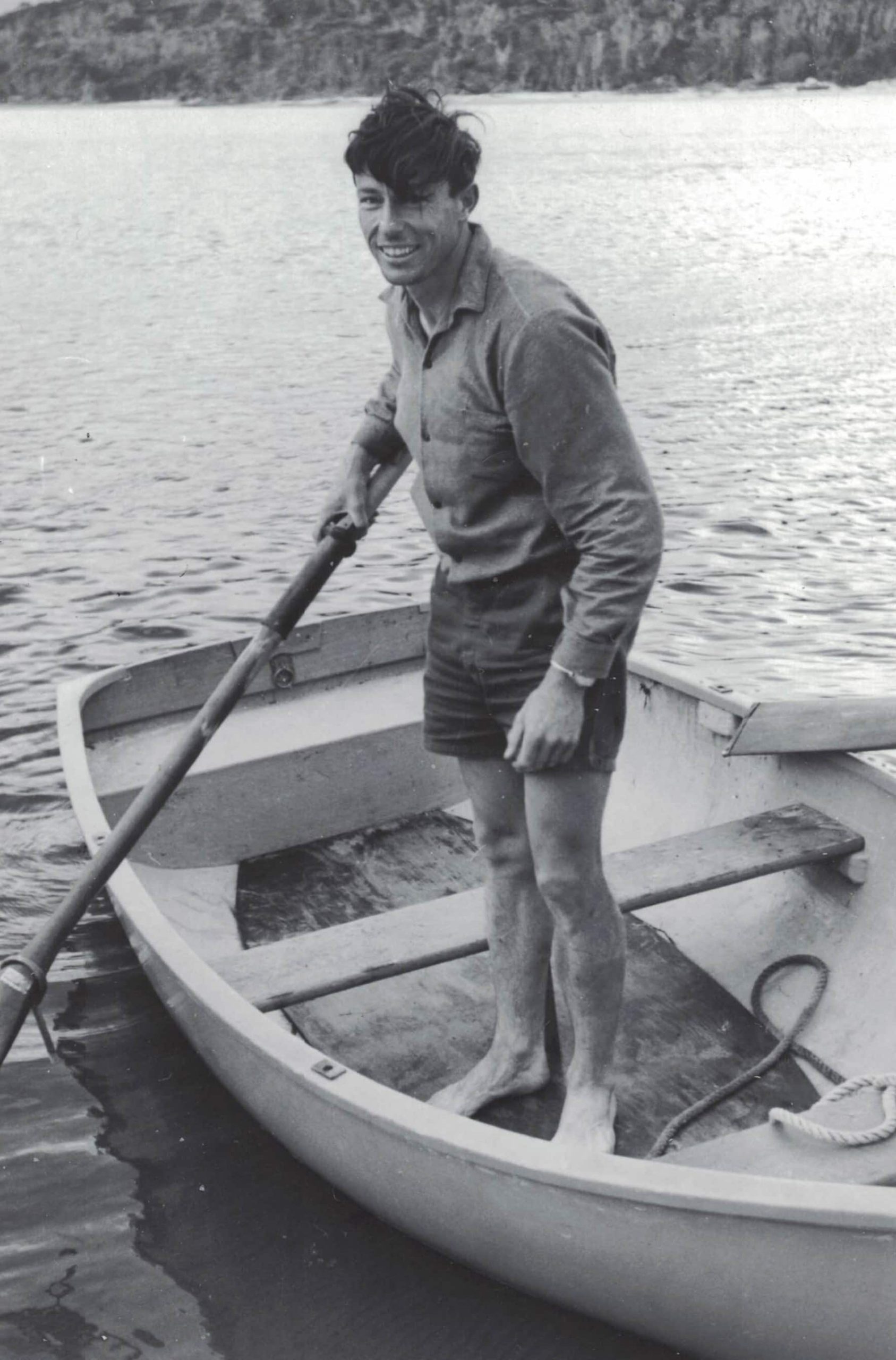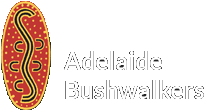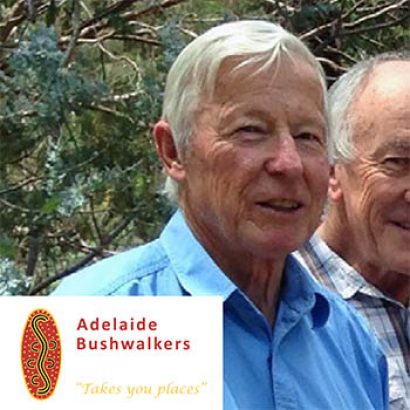Whether we know it or not, ABW members owe a large debt to Peter Beer, who passed away in the Royal Adelaide Hospital on Sunday 22/9/2024. On joining in 1959, he and a handful of energetic, young members found a club entering its adolescence after foundation in 1946. It could not have been in safer hands.
Peter was one of those people who put their best into everything they do. He was a frequent and popular walk leader, and intrepid explorer of our state. In an age when good maps were not available, he helped produce some of the earliest walking maps of the northern Flinders Ranges. You can see one here.
Arthur Ward describes his leadership in action: “On a 1960s Wilpena-Edeowie-Aroona Valley walk, Peter as leader, calmly but decisively organised the rescue of our badly injured member who had fallen from the steep face of one of the peaks of Mt Sawtooth overlooking the Aroona Valley. I particularly admired Peter’s work because I reckon I had as much shock as the brave victim. Peter knew the capabilities of everyone and allocated roles accordingly.”

His navigation was quiet and spot on. “He was an excellent navigator,” says Trevor May, “and always had his thumb on the map checking off all the features, creeks and gullies as he walked past them. He always knew where he was and could pick the best route, maybe not always the shortest, to his destination.
“On one of my first walks with him in the Flinders he asked if anyone wanted to do some navigating and a couple of us said yes. We were approaching a saddle and he stopped and told us to look at our maps and tell him what we would expect to see from the saddle when we got there. I said why don’t we just go up there and have a look. He said, politely, no, just read the map! Having done some map reading before and after that incident, it remains a seminal lesson for me in really understanding off-track, bush navigation.”
His personal qualities were just as important to his effectiveness in the club. “In all the years I knew him,” says Harry Greet, “I never heard him say a bad word about anybody. He always found the good in people.” No doubt being a secondary school teacher gave him ample training in forbearance!
“Peter didn’t publicly rebuke the occasional new walker who rushed ahead leaving the leader in doubt,” adds Arthur. “However, he did have the trust once he knew your strengths to split a large party as appropriate when conditions were not extreme.”
After his early country teaching employment and some overseas work and travel, he was the first ABW member to serve a total of four years as President. He also served two years in the vital role of Walks Secretary. If that’s not enough, he also pioneered New Member Training Weekends in the club. The club awarded him Life Membership in 1982.
Peter as an author was a valued and frequent contributor to the ABW magazine. In this edition is reprinted one of his trip reports. He took on the major editing role for our publication of ‘ADELAIDE BUSHWALKERS – 50 YEARS’ and had the honour of writing the foreword in the reprint of Warren Bonython’s excellent ‘Walking the Flinders Ranges.’
He wrote two books which can also be found in our library. The first, ‘Flinders Ranges Walks‘, was published in 1981 with the second and third editions being published by the Walking Federation (now Walking SA) in 1997 and 2001. Sales of the booklet contributed to Federation funds. The second, co-authored with June Boscence, ‘Adelaide’s Best Bush, Coast & City Walks‘ was first published in 2011 and is now in its third edition.
It is Harry Greet’s considered view that Walking SA would not have become the organisation it is without his and June’s foundational role. Peter contributed to Walking SA as a volunteer from 1996 to 2010. He also served as President, Secretary, and representative on the Conservation Council of SA. He prepared funding applications and budgets, particularly for walking trails in the Adelaide Hills – notably the Pioneer Women’s Trail, a vision of the Hahndorf Branch of the National Trust SA, where he also worked to mark the trail on site.
After Judith Cahill, Peter became the coordinator of the ABW Wheel Cactus Control Project on Gum Creek Station from 2008 to 2019. Volunteers worked each year for over a decade to control invasive cactus on land immediately adjoining Ikara – Flinders Ranges National Park. Peter largely devised the search pattern and data logging method used in the project which kept him busy each night while at Gum Creek. You can read his 2013 article on the project here.
After retirement, Peter was an avid traveller and walker with a broad spectrum of interests including ornithology. For many years up to 2024, Peter was the President of the Walking Trails Support Group (affiliated with Friends of Parks). Despite his preference for walking off-track, he nevertheless appreciated the need for structured access to provide for the less able and to minimise environmental impacts. He also gave significant assistance with the 2002 Robert Brown viewpoint tower on the summit of Mount Brown.
A large number of older members of the club, including several other Life Members, attended his funeral on Friday 27th September, reflecting the high regard in which he was held. He is survived by his wife Alison who was an active club member for many years from 1959 when she also first joined the club.
Thanks also to Walking SA and Walking Trails Support Group for this information.
Tribute to Peter Beer by Roger Kempson
I joined ABW in 1962 and soon became aware of Peter Beer who had been doing intrepid walks in areas like the northern Flinders Ranges and Tasmania. He was affable, well organized and an excellent map reader, so when he announced a trip to Precipitous Bluff in Southwest Tasmania during the Christmas/New Year holiday period Dec 1968-Jan 1969 (10-day trip) I signed up with enthusiasm.
During the walk I realized the enormous responsibility on the leader of such a trip: this was in the days of map and compass navigation (no GPS), with basic maps and no way of communication to the outside world (now we have mobile phones, EPIRBs and PLBs). Peter was meticulous in keeping the party together and letting us know what he was planning. These qualities had been instilled into me when I led a through walk in Frenchman’s Cap National Park that involved crossing the Franklin River on a cable using home-made harnesses followed by an ascent over many massive fallen trees and thick scrub where we only managed 3km during a long arduous day.
Members of the ‘PB’ party (led by ‘PB’!) were Peter, his wife Alison, John Liddle (who would be my groomsman at my wedding in 1971), Valerie Hazel and myself.
Precipitous Bluff circuit
Our route took us to Hill No. 1, Moonlight Flat, Mounts La Perouse, Maxwell, Pinders Peak and Wylly to Precipitous Bluff Low Camp. On to Precipitous Bluff High Camp and the Summit Cairn (made it after some ‘scrub bashing’!). There were fantastic views of the surrounding wilderness, New River Lagoon and the coast with patches of snow on summits – blessed with fine weather at this stage. (How different to a trip led years later by John Bartlett – every day was apparently a battle for survival, but they made it as all the party were experienced and highly committed).
Now for the descent – there was bit of a track for a while but then we got into thick scrub and then the dreaded horizontal scrub (trees get blown over and then resprout so you have a three dimensional lattice to weave through). Peter had a compass bearing he had been given which probably saved us some time. We were running out of daylight so had to make do with whatever patches of ground we could find with tents just draped over us.
Next day we eventually made it to a small sandy patch on New River Lagoon – we were all quiet and reflective at this stage as we knew there were more trials to come. My shirt was in tatters and was put in a waste bin later. We each grabbed a couple of poles (tree branches) for the long wade down the Lagoon with water averaging mid-thigh. Arriving at Prion Beach it was now just several days walk along the South Coast Track to the end. The weather had changed at this stage and looking up to the summits we were mighty glad we weren’t still up there. A very successful walk thanks to a very capable inspiring leader.
Resupply of food
In the 1960s/1970s walking parties doing extended walks in remote areas in Tasmania could organize air drops of food (thrown out of a light aircraft) We bought some very large paint tins, packed in the food, soldered around the lid and then put each tin in a hessian bag surrounded by copious quantities of wood shavings. These were posted off to the company in Tasmania that did the drops well in advance of leaving home. After the drops the company sent us a sketch map of where our tins had landed.
We arranged for drops at the Mt Wylly plateau and Prion Beach. In hindsight we could have survived with only one drop, particularly as another member who was coming pulled out after we had already consigned the bags – this meant we walked out with plenty of food to spare. (Later on these drops were banned, which meant that most groups had to carry all their supplies with them).
When we retrieved our drops during the walk we opened the bottoms of the tins with a can opener and transferred the food to our packs. The tins were then flattened, put in a fire made from the bags and shavings and then buried in boggy ground (which was flaunting a later policy of ‘carry out all rubbish’ !!).
Cooking
In the early days of the club, campfires for cooking (as well as for warmth and illumination) were the norm and cooking stoves were generally only to be used in bad weather or emergencies. On our trip one person would get up in the morning well ahead of the others to get a fire going for breakfast. Evening fires were generally of a modest size as finding enough dry firewood was a problem and group billies were carefully positioned as any spillage would have set back the good work of the firemakers.
Gear
There was only a limited variety available (some items could be ordered from overseas but this was usually impractical or too expensive.) Boots were often of the work-boot design, clothing was mostly natural materials (cotton and wool), parkas were oiled Japara (no Gortex back then), rucksacks only had a waist strap (there was no broad waist band taking a lot of weight on the hips like those of today).
Next article: Walking Around Wilpena Pound


Comments (0)